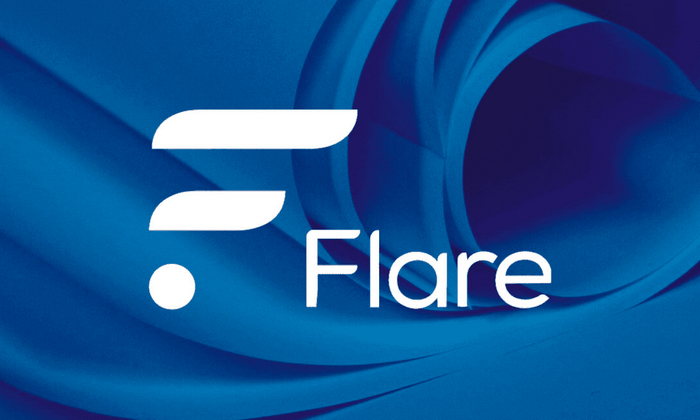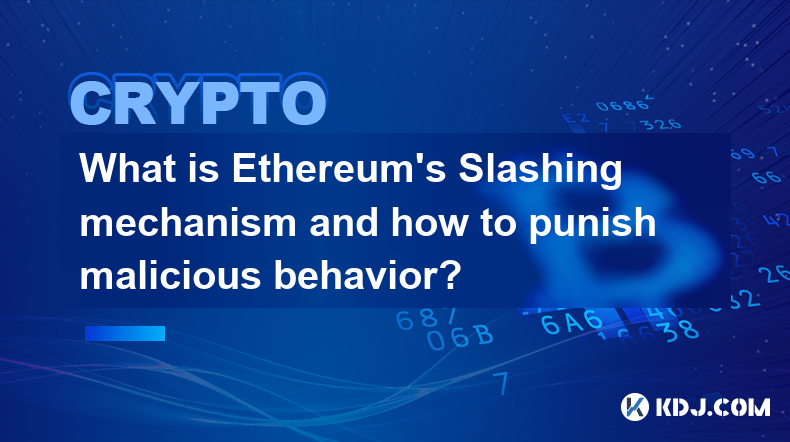-
 Bitcoin
Bitcoin $82,067.5026
-0.66% -
 Ethereum
Ethereum $1,805.2382
-0.94% -
 Tether USDt
Tether USDt $1.0000
0.03% -
 XRP
XRP $2.1124
-0.98% -
 BNB
BNB $600.4357
-0.58% -
 Solana
Solana $124.2441
-0.06% -
 USDC
USDC $1.0001
0.00% -
 Dogecoin
Dogecoin $0.1660
-2.08% -
 Cardano
Cardano $0.6567
-2.33% -
 TRON
TRON $0.2322
0.69% -
 Toncoin
Toncoin $3.8860
5.49% -
 Chainlink
Chainlink $13.3319
-1.41% -
 UNUS SED LEO
UNUS SED LEO $9.1133
-5.19% -
 Stellar
Stellar $0.2655
-0.59% -
 Avalanche
Avalanche $18.7049
-4.17% -
 Sui
Sui $2.3220
1.06% -
 Shiba Inu
Shiba Inu $0.0...01241
-1.84% -
 Hedera
Hedera $0.1666
-3.06% -
 Litecoin
Litecoin $85.6734
0.39% -
 Polkadot
Polkadot $4.0181
-0.83% -
 MANTRA
MANTRA $6.2351
-0.21% -
 Bitcoin Cash
Bitcoin Cash $299.2299
-0.99% -
 Bitget Token
Bitget Token $4.5801
-1.18% -
 Dai
Dai $1.0001
0.01% -
 Ethena USDe
Ethena USDe $1.0001
0.04% -
 Pi
Pi $0.7707
-3.89% -
 Hyperliquid
Hyperliquid $12.3387
-2.74% -
 Monero
Monero $218.0211
1.16% -
 Uniswap
Uniswap $5.8505
-1.80% -
 Aptos
Aptos $5.2708
1.24%
What is the value and future of Flare currency?
Embracing interoperability, Flare positions itself as a key player in DeFi's future, providing cross-chain connectivity to unlock new horizons and drive the value of its native currency.
Nov 19, 2024 at 01:07 am

What is the Value and Future of Flare Currency?
Introduction:
Flare is a blockchain protocol that aims to bridge the gap between the worlds of distributed ledger technology (DLT) and decentralized finance (DeFi). Launched in 2020, its native currency, FLR, has gained significant traction in the crypto market. This comprehensive guide explores the inherent value and future prospects of Flare currency, providing in-depth insights for investors and blockchain enthusiasts alike.
Understanding the Value Proposition of Flare Currency:
Flare's value proposition revolves around its unique features and functionalities:
- Interoperability: Flare acts as an intermediary between different blockchain networks, facilitating cross-chain communication and asset transfer. It allows users to bridge assets from various blockchains, such as XRP, Litecoin, and Dogecoin, onto the Flare network, unlocking new opportunities for cross-chain DeFi applications.
- Smart Contract Capabilities: Despite being built on the XRPL, which lacks native smart contract functionality, Flare introduces smart contract execution capabilities. This enables developers to create sophisticated decentralized applications (dApps) on the Flare network, expanding its ecosystem and fostering innovation.
- Low Gas Fees: Compared to other popular blockchains, Flare offers significantly lower transaction fees. This makes it an attractive platform for users seeking cost-effective access to DeFi services and blockchain applications.
- Stability and Security: Built on the XRP Ledger (XRPL), Flare inherits its stability and security features. XRPL is renowned for its low latency, high throughput, and robust security protocols, providing a solid foundation for Flare's operations.
The Future of Flare Currency:
The future of Flare currency is shaped by a convergence of factors, including:
- Expanding DeFi Ecosystem: The integration of smart contract capabilities on Flare is expected to stimulate the development of a vibrant DeFi ecosystem on the network. This could attract developers, liquidity providers, and users, further increasing the demand for FLR and driving its value.
- Cross-Chain Bridge Expansion: Flare is actively pursuing partnerships with other blockchain networks to expand its interoperability capabilities. By bridging to new blockchains, it broadens its reach, increasing the utility and value of FLR as a cross-chain asset.
- Institutional Adoption: Flare's focus on security, stability, and regulatory compliance makes it well-positioned for adoption by institutional investors seeking exposure to the blockchain and DeFi space. As institutions enter the market, demand for FLR is likely to surge, boosting its value.
- Flare Finance: The launch of Flare Finance, a DeFi platform native to the Flare network, introduces a suite of DeFi products and services, including lending, borrowing, swapping, and yield farming. The integration of these features enhances the utility and demand for FLR within the Flare ecosystem.
- NFT Support: Flare recently announced support for non-fungible tokens (NFTs) on its network. This opens up new possibilities for creators, collectors, and decentralized marketplaces, potentially increasing FLR's utility and value as an asset used in the NFT space.
Conclusion:
Flare currency has established a solid value proposition through its interoperability, smart contract capabilities, low fees, and stability. The future of Flare looks promising as the network expands its DeFi ecosystem, bridges to new blockchains, and attracts institutional adoption. With the launch of Flare Finance and the introduction of NFT support, Flare is well-positioned to capture a significant share of the blockchain and DeFi market, driving continued demand for FLR and potentially unlocking substantial value for investors.
Disclaimer:info@kdj.com
The information provided is not trading advice. kdj.com does not assume any responsibility for any investments made based on the information provided in this article. Cryptocurrencies are highly volatile and it is highly recommended that you invest with caution after thorough research!
If you believe that the content used on this website infringes your copyright, please contact us immediately (info@kdj.com) and we will delete it promptly.
- Inverse Head-and-Shoulders Pattern in Bitcoin (BTC) Price Charts Might Not Be as Promising as it Appears
- 2025-03-31 08:40:12
- Dawgz AI ($DAGZ) Combines Artificial Intelligence with Meme Culture to Deliver 1000x Potential
- 2025-03-31 08:40:12
- Roman coin that is believed to be the first of its kind found in the UK has sold for nearly £5,000
- 2025-03-31 08:35:13
- Cardano (ADA) Price Repeating a Pattern From 2024 That May Signal a Massive Pump
- 2025-03-31 08:35:13
- Development activity on Ethereum stands as the most active in blockchain space by tracking 165.7K developer events.
- 2025-03-31 08:30:12
- How This Crypto Trader Made a 470,000% Profit on Pepe
- 2025-03-31 08:30:12
Related knowledge

What is Ethereum’s Slashing mechanism and how to punish malicious behavior?
Feb 20,2025 at 03:08am
Key PointsOverview of slashingDifferent types of slashing in EthereumIncentives and consequences of slashingIdentifying and reporting slashed validatorsOngoing discussions and potential improvementsEthereum's Slashing Mechanism: Punishing Malicious BehaviorEthereum's slashing mechanism is an essential tool for ensuring network security and punishing mal...

What is the verifier node of Ethereum and how to become a verifier?
Feb 19,2025 at 06:00pm
The Verifier Node of Ethereum: A Comprehensive GuideKey Points:What is a Verifier Node?How to Become a Verifier NodeResponsibilities and Rewards of a Verifier NodeMinimum Requirements for Becoming a Verifier NodePotential Difficulties in Running a Verifier Node1. What is a Verifier Node?A Verifier Node is an independent entity on the Ethereum network th...

What is Ethereum’s staking, and how to participate and earn money?
Feb 19,2025 at 04:37pm
Key Points:Understanding Ethereum's Staking MechanismSteps to Participate in StakingBenefits and Rewards of StakingSecurity and Risk ConsiderationsTechnical Requirements and Hardware OptionsPotential Challenges and Troubleshooting TipsFAQs on Ethereum StakingWhat is Ethereum's Staking?Proof-of-Stake (PoS) is a consensus mechanism used in blockchain netw...

What is Ethereum’s DAO (Decentralized Autonomous Organization) and how does it work?
Feb 20,2025 at 03:12am
Key PointsDefinition and Structure of a DAOGovernance and Decision-Making in DAOsBenefits and Use Cases of DAOsChallenges and Limitations of DAOsWhat is Ethereum's DAO (Decentralized Autonomous Organization) and How Does It Work?Definition and Structure of a DAOA Decentralized Autonomous Organization (DAO) is an innovative governance and management fram...

What is Ethereum's multi-signature wallet and how to improve security?
Feb 20,2025 at 02:18pm
Key Points:Understanding the Concept of a Multi-Signature WalletBenefits and Drawbacks of Multisig WalletsRequirements for Setting Up a Multisig WalletStep-by-Step Guide to Generating a Multisig WalletImplementing Strategies for Enhanced Security1. Understanding the Concept of a Multi-Signature WalletA multi-signature (multisig) wallet in the Ethereum e...

What is Ethereum's oracle and how to provide data for smart contracts?
Feb 21,2025 at 01:30am
Key Points:Understanding the concept of oracles in EthereumExploring different types of oraclesDetailed guide on how to provide data for smart contractsAddressing potential challenges and considerationsWhat is Ethereum's Oracle?Oracles are crucial components in the Ethereum ecosystem, enabling smart contracts to access real-world data and off-chain even...

What is Ethereum’s Slashing mechanism and how to punish malicious behavior?
Feb 20,2025 at 03:08am
Key PointsOverview of slashingDifferent types of slashing in EthereumIncentives and consequences of slashingIdentifying and reporting slashed validatorsOngoing discussions and potential improvementsEthereum's Slashing Mechanism: Punishing Malicious BehaviorEthereum's slashing mechanism is an essential tool for ensuring network security and punishing mal...

What is the verifier node of Ethereum and how to become a verifier?
Feb 19,2025 at 06:00pm
The Verifier Node of Ethereum: A Comprehensive GuideKey Points:What is a Verifier Node?How to Become a Verifier NodeResponsibilities and Rewards of a Verifier NodeMinimum Requirements for Becoming a Verifier NodePotential Difficulties in Running a Verifier Node1. What is a Verifier Node?A Verifier Node is an independent entity on the Ethereum network th...

What is Ethereum’s staking, and how to participate and earn money?
Feb 19,2025 at 04:37pm
Key Points:Understanding Ethereum's Staking MechanismSteps to Participate in StakingBenefits and Rewards of StakingSecurity and Risk ConsiderationsTechnical Requirements and Hardware OptionsPotential Challenges and Troubleshooting TipsFAQs on Ethereum StakingWhat is Ethereum's Staking?Proof-of-Stake (PoS) is a consensus mechanism used in blockchain netw...

What is Ethereum’s DAO (Decentralized Autonomous Organization) and how does it work?
Feb 20,2025 at 03:12am
Key PointsDefinition and Structure of a DAOGovernance and Decision-Making in DAOsBenefits and Use Cases of DAOsChallenges and Limitations of DAOsWhat is Ethereum's DAO (Decentralized Autonomous Organization) and How Does It Work?Definition and Structure of a DAOA Decentralized Autonomous Organization (DAO) is an innovative governance and management fram...

What is Ethereum's multi-signature wallet and how to improve security?
Feb 20,2025 at 02:18pm
Key Points:Understanding the Concept of a Multi-Signature WalletBenefits and Drawbacks of Multisig WalletsRequirements for Setting Up a Multisig WalletStep-by-Step Guide to Generating a Multisig WalletImplementing Strategies for Enhanced Security1. Understanding the Concept of a Multi-Signature WalletA multi-signature (multisig) wallet in the Ethereum e...

What is Ethereum's oracle and how to provide data for smart contracts?
Feb 21,2025 at 01:30am
Key Points:Understanding the concept of oracles in EthereumExploring different types of oraclesDetailed guide on how to provide data for smart contractsAddressing potential challenges and considerationsWhat is Ethereum's Oracle?Oracles are crucial components in the Ethereum ecosystem, enabling smart contracts to access real-world data and off-chain even...
See all articles






















































































